What do you do when somebody sneezes? Most likely, you say something like “bless you.” And you may not even realize you’re doing it—it’s almost an automatic reaction, and you’re just being polite. This is just one example of the power of superstitions around the world.
Worldwide, people practice rituals and sayings and use charms to help them move through daily life and avoid bad luck. These superstitions reveal something not just about our fears, but about the desires that connect us and the cultures we come from. At Remitly, we love to focus on what unites us across borders, and superstitions are definitely something we all have in common.
In this article, we’ll look at some of the world’s most intriguing superstitions, from protective charms and lucky objects to symbolic numbers and rituals. Together, they show us how human imagination weaves the mysterious into the everyday.
What are superstitions?
A superstition is a cultural belief rooted in tradition, folklore, or religion. They’re often passed down through families and communities, and some of them can be very old. Typically, they serve a purpose. It might be to bring good luck, prevent bad luck, or offer protection from outside events and forces.
Superstitions are global traditions that take countless forms around the world, but they can be grouped into specific categories. Common superstitions include:
- Protective charms and talismans.
- Lucky and unlucky numbers.
- Symbolic animals and colors.
- Everyday rituals intended to influence fate.
Customs and superstitions often come from the distant past, and their origins aren’t always clear. Often, they travel with immigrant communities and adapt to new environments while preserving a sense of cultural identity and a connection to the past.
Ancient traditions: the evil eye (Mediterranean & Middle East)
These days, most of us don’t believe that other human beings have magical powers. But that wasn’t always the case. The evil eye is one of the most ancient cultural beliefs around the world, and it continues to have power in some cultures today.
The basic idea is that a jealous, envious, or malicious glare from someone has the power to bring misfortune, illness, or even physical harm. This invisible danger can strike anyone at any time, but it’s often directed toward the young, beautiful, or successful, because that’s who people tend to be jealous of.
There’s a kind of logic behind it; having jealous or vengeful feelings about somebody can reveal itself in the way you look at them.
Protection from the evil eye
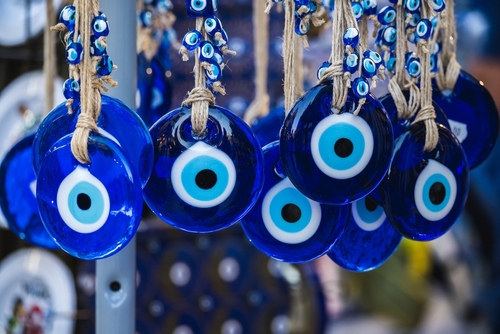
Over the years and in different regions, various protective practices have been developed to turn away the power of the evil eye. One of the most recognizable is the blue-eyed charm, a bright amulet designed to reflect the harmful gaze back to its source.
These charms are known as nazar in Turkey or mati in Greece, and you’ll still see them in souvenir stores and convenience shops across the Mediterranean and Middle East. Often, they’re used as jewelry, keychains, or charms for the rearview mirror of your car.
Another form of protection against the evil eye is hand gestures. For example, there’s the figa, where you tuck your thumb between the fingers of your fist, or the openhanded hamsa gesture.
This is an ancient belief spread widely through trade, conquest, and migration; you’ll find it across North Africa, the Middle East, and the Mediterranean, as well as in immigrant communities in Europe and the Americas.
Everyday luck: horseshoes and black cats (Europe)

I don’t consider myself a superstitious person. But growing up in an Irish immigrant community, having a horseshoe hanging above the door was almost universal. So much so that even though I don’t necessarily believe in the superstition, I still have one hanging above my own door today. It’s not limited to doorways, either—in Ireland, brides once wore a horseshoe as part of the wedding ceremony.
However, the idea of horseshoes bringing good luck isn’t limited to Irish communities; it’s widespread in Europe. Putting a horseshoe above the door is believed to protect the home and invite good fortune. Iron was believed to ward off evil spirits and fairies, and the crescent shape symbolized both fertility and prosperity.
I hang my horseshoe with the open end facing upward to catch the luck that rains down from above. In Eastern Europe, the Mediterranean, and the Middle East, they’re hung upside down so that the luck isn’t trapped inside and can pour out on everyone who passes underneath them.
Black cats
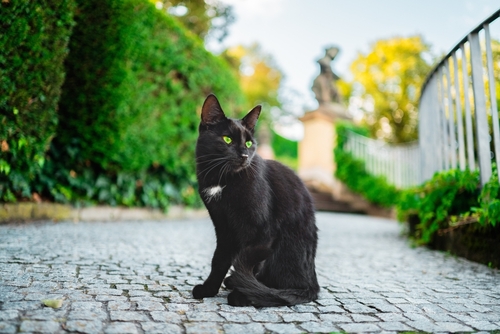
Black cats have a more complex reputation. In many parts of Europe, black cats are linked to witchcraft and bad omens, especially if they cross your path at night. But in Ireland and the UK, black cats are often seen as symbols of good luck, despite having become part of the tradition of Halloween. They’re also considered lucky in Egypt and Japan.
These cultural beliefs spread across the Atlantic with European settlement in the Americas. To this day, it’s easy to find a horseshoe above the door of a farmhouse in the American Midwest or a black cat as part of Halloween decorations in British Columbia. That’s one way that local traditions become worldwide customs.
Numbers and colors
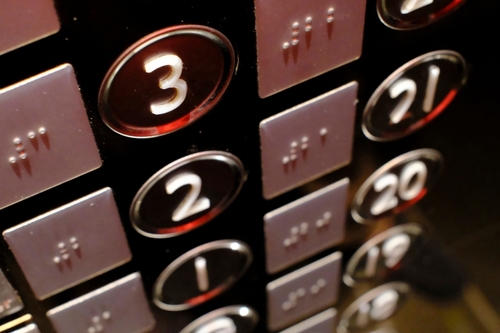
The belief in lucky numbers and colors is one of the most common superstitions worldwide. It’s still common for tall buildings not to have a 13th floor, jumping instead from 12 to 14. There’s also the belief that Friday the 13th is a particularly unlucky day, with some people even having a phobia of the number 13, known as triskaidekaphobia.
One explanation that’s been offered for this comes from the Christian religion. Judas, the man who betrayed Jesus, was the thirteenth guest at the Last Supper. So this might be a very old superstition indeed.
Other cultures have different unlucky numbers. Buildings in China, or in cities with large Chinese populations like LA or Vancouver, often have no fourth floor, as this number is linked to misfortune and death. This comes from the fact that the way it’s pronounced in Cantonese sounds almost exactly the same as the word for death, si.
Eight, on the other hand, is considered lucky. I once had a Chinese man offer to buy my phone number because it contained four eights. Eight is pronounced “ba,” which is similar to “fa,” which means to make a fortune.
Lucky colors
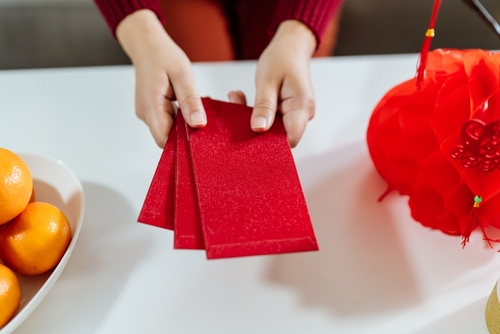
In Asian cultures, specific colors also carry symbolic weight. Red is tied to joy, celebration, and good fortune, which is why it’s everywhere during the Chinese New Year. Anyone who’s been handed a red envelope around the lunar new year will know the ongoing power of the superstition, as these envelopes are usually filled with money.
Interestingly, white represents mourning and death. Unlike in the West, where it’s a color associated with weddings, in the East, it’s worn at funerals.
These global traditions have real-world effects. For example, it can be harder to sell a house that has an unlucky number. Businesses are also careful in how they brand themselves, especially if they have a multicultural client base. Superstitions from different countries often take root in new places and change how those cultures work.
Rituals of protection (Latin America)
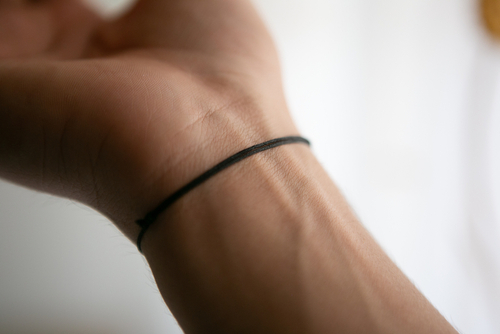
Protective rituals are part of everyday life. For example, many people knock on wood to avert misfortune if they have mentioned something that might go wrong.
Latin America has a particularly rich culture of these kinds of protective rituals. Spanish colonizers brought over European traditions that merged with pre-existing indigenous cultural beliefs to form a whole system of beliefs that’s still around to this day.
For example, it’s common practice to tie a red or red and black string around a child’s wrist to shield them from the evil eye. Also, herbs, salt, and sometimes eggs are used in cleansing rituals intended to sweep bad energy away from the home and restore balance. These beliefs are about the idea that unseen forces can shape well-being, and that your daily routines can help to protect you.
The Day of the Dead
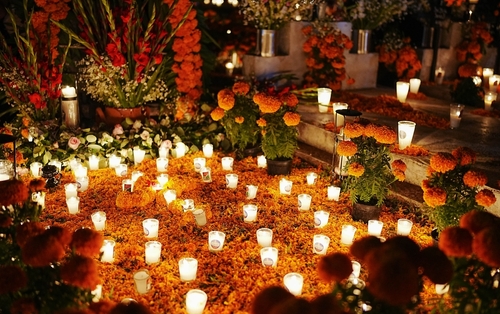
While it’s not about self-protection, one of the most striking examples of folk rituals is Día de los Muertos (Day of the Dead). This event is celebrated across Mexico and in Latin America, and it fuses indigenous traditions with Catholic influences. The goal of the day is to honor ancestors with altars, marigolds, food, and music. It’s not about fearing the dead, the way that Halloween has become—It’s more about celebrating them.
For immigrant families, these rituals can be anchors in unfamiliar settings. They’re links to home and ancestors that can provide comfort as they navigate their new life.
So whatever you believe about the origins of these rituals, they can be really important to people. And there’s no denying that they still have power to protect us from some things—like loneliness, isolation, and a feeling of helplessness against the whims of fate!
The value of global traditions
These days, we live in a scientific and technological age that seems to have little room for old beliefs. But superstition hangs on. It seems simply to be part of being human.
For many people there’s comfort in these rituals. Professional athletes, for example, are generally far more superstitious than the wider population. After all, their careers depend more than most on luck and fate—the right bounce of the ball or split-second timing—as well as their own talent and dedication, of course.
The military is also a rich source of superstitious tradition. In fact, any job or way of life where outcomes are unpredictable tends to attract superstition, from fishing to farming to commercial diving. The world can be a scary place, and superstitious rituals can help us feel like we have more control over our lives.
Superstitions evolve
Superstitions go back a long way, and as they spread, they can evolve. Voodoo, for example, grew out of West African spiritual traditions that enslaved people brought to the Americas. In places like Haiti and later Louisiana, these beliefs mixed with Catholic practices, so African spirits were often linked with Catholic saints. Over time, this created a religion with its own rituals and deities.
That’s also what happened in Santeria, where West African Yoruba beliefs blended with Catholicism and then spread through Cuban and Puerto Rican communities to places like Miami and New York.
So while superstition can change, it’s certainly not going to disappear, and sometimes that’s a good thing. These folk beliefs connect us to our past, providing a bridge to those who’ve gone before us wherever we go in the world. These fascinating cultural practices are part of what it means to be human. So maybe we should celebrate our superstitions, instead of denying them.
Are There Superstitions Related to Obtaining a New Social Security Number?
Many people believe that obtaining a new social security number can bring changes to their luck or fortune. Some think it’s a fresh start that wards off past misfortunes, while others hold onto various rituals, like carrying a lucky charm, to ensure positivity in their new social security journey.
FAQs
Why do superstitions exist?
Though they can seem old-fashioned, superstitions can provide psychological comfort in uncertain situations, strengthen community bonds, and often contain practical wisdom. For example, the superstition against walking under a ladder is also good common sense.
Why do similar superstitions exist in different cultures?
Many superstitions arise from shared human experiences. Fear of illness, desire for luck, and anxiety over the unknown are universal to us all. Also, trade, migration, and cultural exchange can spread superstitious beliefs from one part of the world to another.
Do superstitions have any scientific basis?
Sometimes. A good example is garlic. Popularly believed to protect people against evil spirits and disease, it’s now known to have antimicrobial properties.
How should travelers handle unfamiliar superstitions?
The best approach is always respect. These rituals can hold strong meaning, so it’s polite to observe them when appropriate and not mock the beliefs of others. Even if you don’t believe in them yourself, common superstitions worldwide, like lucky numbers, are often comforting for people. It’s part of the richness of human culture that makes travel so enjoyable.
